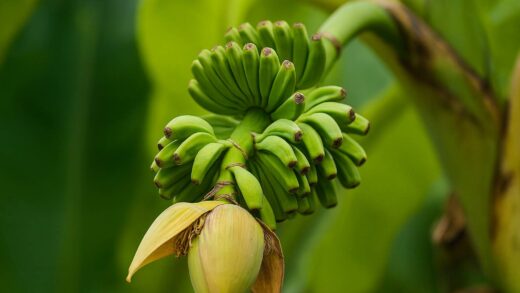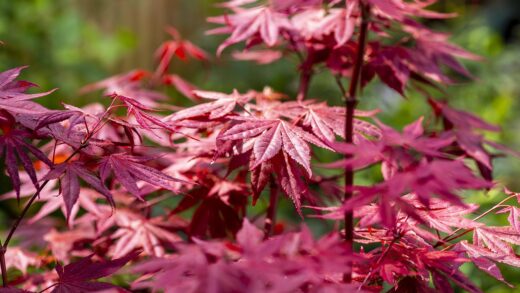Pruning and cutting back the blue eryngo is a straightforward and forgiving task, primarily focused on aesthetic maintenance and end-of-season cleanup rather than on complex shaping or health-related interventions. This resilient perennial has a naturally strong and well-defined structure, meaning it does not require the kind of formative pruning that many shrubs or other perennials need to thrive. The main decisions a gardener faces revolve around deadheading spent blooms during the summer and deciding when to cut back the entire plant in preparation for the following season. These choices are often guided more by personal preference and garden style than by strict horticultural necessity.
The primary pruning activity during the growing season is deadheading, which involves removing the flower heads once they have faded. For blue eryngo, this is an optional task. While it can sometimes encourage a small, secondary flush of blooms and creates a tidier appearance in a formal setting, many gardeners choose to leave the flower heads in place. The architectural and textural quality of the spent blooms provides continued visual interest long after their vibrant color has diminished, adding a unique dimension to the late summer and autumn garden.
The main “pruning” event is the annual cutback of the dead stems and foliage. This is typically done either in late autumn after the plant has been killed back by hard frosts, or it can be left until late winter or early spring. Leaving the plant standing through the winter offers significant benefits, including providing a dramatic silhouette in the dormant landscape, offering shelter for beneficial insects, and supplying seeds for foraging birds. This approach aligns with a more naturalistic and wildlife-friendly style of gardening.
Ultimately, the pruning regimen for blue eryngo is minimal and flexible. The plant’s robust nature means it will perform well regardless of whether you are a meticulous deadheader or prefer a more hands-off approach. By understanding the purpose behind each cut—whether for aesthetics, to encourage minor reblooming, or for seasonal cleanup—you can manage your plant in a way that best suits your garden’s design and your personal maintenance philosophy.
The purpose of pruning the blue eryngo
The rationale behind pruning a blue eryngo is quite different from that for many other garden plants. The primary purpose is not to control its size or shape, as it naturally forms a well-behaved, non-invasive clump. It also isn’t pruned to improve its health, as its tough stems and leaves are generally disease-resistant. Instead, the reasons for pruning are almost entirely related to garden aesthetics, managing bloom cycles, and preparing the plant for its dormant period and subsequent new growth.
More articles on this topic
One key purpose is to maintain a tidy appearance, which is particularly relevant in more formal or manicured garden designs. Removing the flower stalks after the blooms have faded prevents the plant from looking spent and can refresh the look of a border in late summer. This cleanup can divert the plant’s energy from seed production back into its roots and basal foliage, although the effect on the overall vigor of this resilient plant is minimal. The decision to tidy up is thus driven by the desired look of the garden.
Another potential, though minor, purpose of pruning during the growing season is to encourage a secondary flush of flowers. By deadheading the primary blooms promptly after they fade, you can sometimes stimulate the plant to produce a later, smaller set of flower stalks. While this reblooming is not as dramatic or reliable as in other perennials like salvias or coreopsis, it can extend the season of interest for those who prioritize continuous flowering over the architectural quality of the spent heads.
Finally, the annual cutback serves the essential purpose of clearing away the previous year’s dead growth to make way for the new shoots that emerge from the crown in spring. This cleanup removes old stems and foliage that could potentially harbor fungal spores and allows sunlight and air to reach the base of the plant, promoting healthy and vigorous new growth. This seasonal reset is the most critical pruning task for the long-term maintenance of the plant.
Deadheading for continuous blooms
Deadheading is the horticultural practice of removing spent flowers from a plant. For many perennials, this is a crucial step to prevent the plant from setting seed, thereby encouraging it to redirect its energy into producing more flowers. With blue eryngo, the impact of deadheading is somewhat more subtle. While it can prompt the plant to produce a secondary, though often smaller and less numerous, set of blooms, the effect is not as pronounced as with other continuous-blooming plants. The primary display will always be the main flush of flowers in mid-summer.
More articles on this topic
To deadhead a blue eryngo, wait until the vibrant blue color of the flower head has faded to a brownish or tan color. Using a clean, sharp pair of pruning shears or secateurs, follow the flower stem down from the faded bloom to a point where it meets a side branch or a set of leaves. Make a clean cut at this junction. This method removes the spent flower while keeping the overall appearance of the plant natural and tidy. Avoid leaving long, headless stalks, which can look awkward.
The decision to deadhead should be based on your gardening goals. If your primary aim is to maximize the number of flowers throughout the season and maintain a very neat appearance, then diligent deadheading is the correct approach. It keeps the plant looking fresh and can provide a modest extension to the blooming period. This is often the preferred method in formal beds or in smaller gardens where every plant is expected to perform at its peak for as long as possible.
However, it is important to weigh this against the benefits of not deadheading. The spent flower heads of the blue eryngo are highly architectural and remain attractive for many months, providing texture and form in the garden long after their color has gone. They are also a favorite food source for birds like goldfinches, who will cling to the stalks to extract the seeds. For many gardeners, these late-season and ecological benefits far outweigh the potential for a few extra, smaller flowers.
Cutting back at the end of the season
The annual cutback of the blue eryngo is the most significant pruning task and is essential for the plant’s rejuvenation each year. This involves cutting down all the previous season’s flower stalks and dead foliage. The main decision for the gardener is not if, but when to perform this task. There are two primary schools of thought: cutting back in the autumn, or waiting until late winter or early spring. Both approaches have their own set of advantages.
Cutting back in the autumn, after the first few hard frosts have killed the top growth, appeals to those who prefer a tidy garden heading into winter. This practice removes all the dead plant material, which can help to reduce the chances of fungal diseases overwintering in the debris. It also means that the spring cleanup workload is reduced, as the beds are already clear and ready for the emergence of new growth and bulbs. In very wet climates, an autumn cutback can also be beneficial as it prevents the dead stems from trapping moisture around the plant’s crown.
Conversely, waiting until late winter or early spring to cut back has become an increasingly popular and ecologically sound practice. Leaving the stems and seed heads standing provides crucial winter interest in the garden, creating beautiful silhouettes, especially when rimmed with frost or snow. These structures also provide vital shelter for overwintering beneficial insects and a food source for seed-eating birds. This approach supports wildlife and contributes to a healthier garden ecosystem.
If you choose to do a late winter or early spring cleanup, the process is simple. Before the new basal growth begins to actively emerge, use sharp shears to cut all the old, brown stems down to the ground level or to the top of the basal rosette if it is semi-evergreen. Be careful not to damage the new shoots that may just be starting to poke through the soil at the base of the plant. Rake away the debris, and the plant will be ready for the new growing season.
Pruning for structural integrity
Blue eryngo is naturally a structurally sound plant, especially when grown in the full sun and lean soil it prefers. In these ideal conditions, it develops thick, sturdy stems that are more than capable of supporting its flower heads without any assistance. Therefore, pruning for structural integrity is generally not necessary. The plant’s innate growth habit is one of strength and stability, and intervention is rarely required to improve its posture.
However, if a blue eryngo is grown in conditions that are less than ideal, such as in soil that is too rich or in a location with slightly less than full sun, it may develop weaker, leggier stems. In this situation, a pruning technique known as “pinching” or “the Chelsea chop” can sometimes be employed, though it is less common for this particular species. This would involve cutting back the main stems by about one-third in late spring, before the flower buds have formed. This can encourage the plant to become bushier and produce more, albeit slightly smaller, flower heads on shorter, sturdier stems.
It is important to note that this is a remedial action to correct for improper growing conditions and is not a standard part of blue eryngo care. The far better approach is to address the root cause of the weak growth by moving the plant to a sunnier location or by avoiding the addition of fertilizers and rich compost. Relying on pruning to fix structural issues caused by poor siting is less effective than simply providing the plant with the environment it needs to develop its natural strength.
In almost all cases, the best way to ensure good structure is through good culture, not through pruning. A blue eryngo that is sturdy and upright is a sign that it is happy with its location. If you find your plant is consistently floppy year after year, this is a clear indication that it is not receiving enough sunlight or that the soil is too fertile. Addressing these fundamental environmental factors will result in a naturally strong and self-supporting plant, rendering any structural pruning unnecessary.


















